OAKHURST – When the Junction Fire roared through Oakhurst on Aug. 18, there were a lot of things going on behind the scenes that residents rushing to evacuate were not aware of.
At a Town Hall meeting in Bass Lake last Thursday, Cal Fire Division Chief Don Stein, along with Battalion Chiefs Troy Cheek and Chris Christopherson shared how the day unfolded.
Chief Don Stein had just spent two weeks on the French Fire, when he was called up to this new and immediate threat. As the Division Chief, Stein is responsible for all State Responsibility Areas (SRAs) in Madera County, and for the City of Madera, through a Cooperative Fire Protection Agreement between the California Department of Forestry and Fire Protection (Cal Fire) and the County of Madera. This agreement is the oldest of its kind in the state and was implemented in 1928.
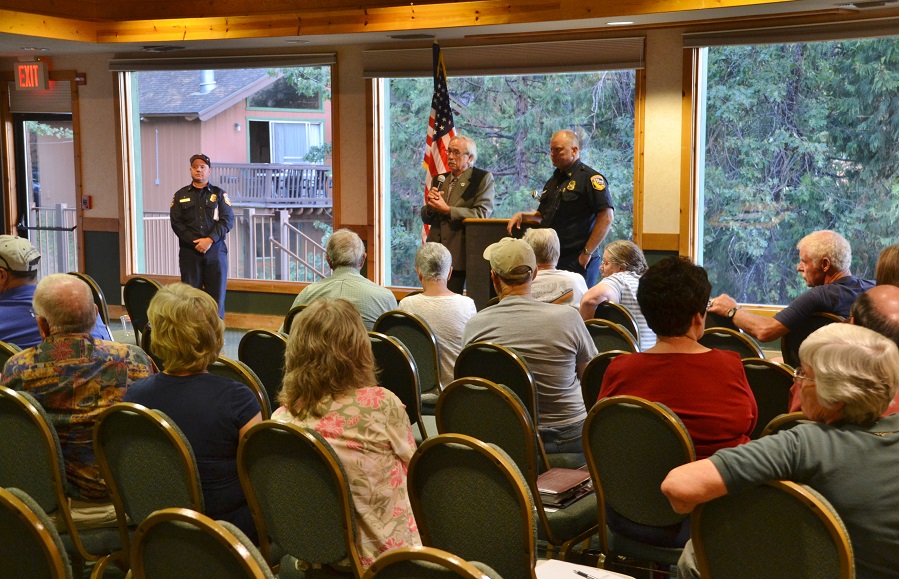 “Our protection responsibilities, first and foremost, are homes and people,” said Stein. “Our mission at Cal Fire is to suppress 90% of all fires at 10 acres or less, and we hit this one with everything we had. Having a DC-10 doesn’t hurt either,” he said, referring to the Very Large Air Tanker (VLAT) that arrived late in the afternoon to blanket the leading edge of the fire with retardant.
“Our protection responsibilities, first and foremost, are homes and people,” said Stein. “Our mission at Cal Fire is to suppress 90% of all fires at 10 acres or less, and we hit this one with everything we had. Having a DC-10 doesn’t hurt either,” he said, referring to the Very Large Air Tanker (VLAT) that arrived late in the afternoon to blanket the leading edge of the fire with retardant.
“A city in a bowl is the worst location for a fire, especially with the wind and the drought conditions we’ve had,” said Stein. He also noted the proliferation of dead and dying bull pine that torched, sending embers out ahead of a fire that was already racing across the basin.
Battalion Chief Troy Cheek was the incident commander on the Junction Fire until it was turned over to Cal Fire Incident Management Team 2 at the 7 a.m. briefing on Tuesday, Aug. 19.
Cheek has worked in the Madera/Mariposa/Merced Unit for many years, from Raymond to Oakhurst, and said this was the one he’d always dreaded.
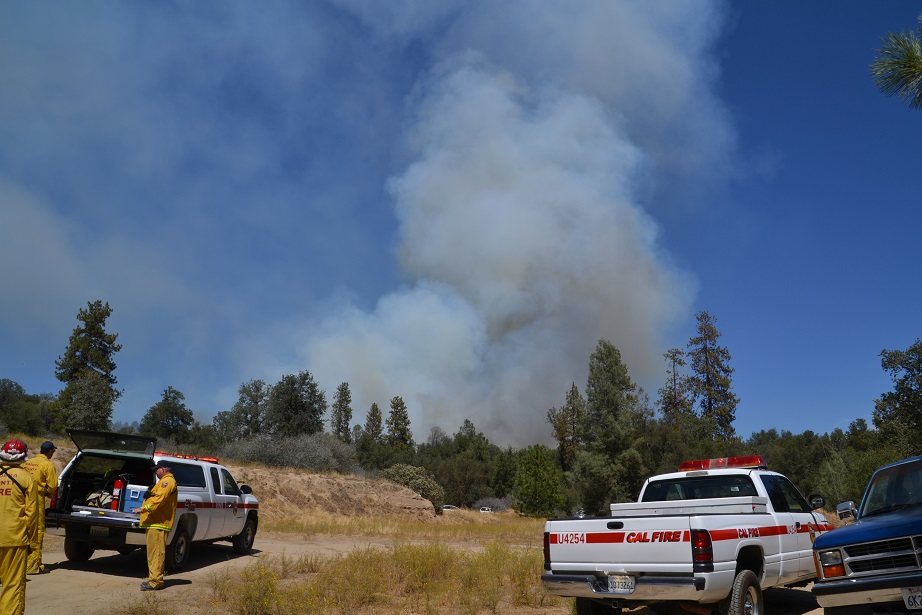 “This fire was my nightmare fire,” said Cheek. “I’ve fought it in my mind many times.”
“This fire was my nightmare fire,” said Cheek. “I’ve fought it in my mind many times.”
When the Junction Fire first started, behind Capitol Pipe off Highway 49 in Oakhurst, Cheek set up his initial Incident Command Post in a dirt lot right behind that business. With a phone in one hand and a radio in the other, he paced a hole in the dirt as he directed resources and ordered up more.
“At first it was just a lot of ground, not a lot of houses,” he recalled. “We hit the right flank and shoulder hard, to keep it out of houses.”
Twice during those first two hours, they thought they had it, said Cheek. Engines and water tenders streamed into the area and fanned out around the then-25-acre blaze. While torching bull pine spotted the fire out well ahead of itself all day, the dead bull pine weren’t his only problem.
“We have live oak that’s almost dead, and with thousands of leaves catching fire and shooting into the air, those clumps of live oaks just torched everything,” he said. “At Quail Drive, we thought we had it. But once it ran through that major drainage, it was off to the races.”
Cheek said he would put in a call to Madera County Sheriff’s Lieutenant Darin McMechan and tell him he needed to evacuate an area, then minutes later, would send him into another area. Things were moving that fast.
Firefighters returning to the area from other fires didn’t go home – didn’t even stage; they went straight out to the lines. They cut fireline, put in hose lays, and when the fire jumped across the highway, there they were, chugging up the line, fighting an amazing raging inferno.
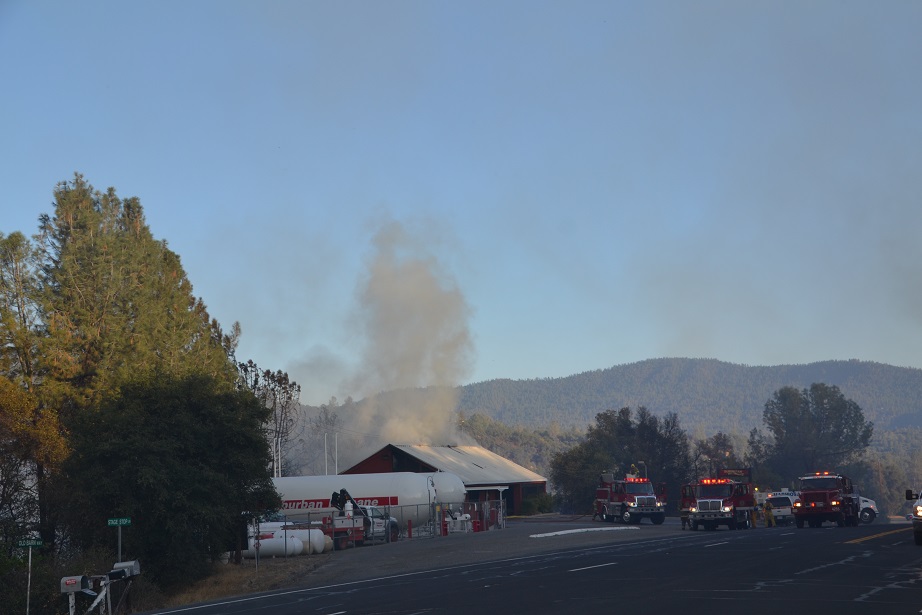 Standing at the heel of the fire with the radio going off and chatter from dispatch, engines and aircraft, Cheek got word about the tanks at Suburban Propane. Now it was a race to protect the 30,000 gallon tanks that could decimate the town if they were to fail.
Standing at the heel of the fire with the radio going off and chatter from dispatch, engines and aircraft, Cheek got word about the tanks at Suburban Propane. Now it was a race to protect the 30,000 gallon tanks that could decimate the town if they were to fail.
But thanks to quick work by crews, they didn’t, and his team never let up, with some firefighters putting in 30 hours on the line before they slept.
With 500 gallons on an engine, and 4,000 gallons on a water tender, Hillview Water Co. was able to keep up with the demand, with crews putting 1.9 million gallons of water on the fire, according to Hillview Compliance and Resource Officer Ralph Fairfield, and never dropping below 75%. They also had a minimum of 1.1 million gallons in reserve. Hillview has a policy of making water available for free to fight any fire in the community, says Fairfield.
Over 13,000 MCAlerts went out to Oakhurst area residents, and everyone prepared for the worst. The Red Cross shelter at the Oakhurst Community Center was set up, then moved to Coarsegold to put more distance between evacuees and the fire danger.
Hotels along Highway 41 were cleared out, businesses were shut down, and the road was closed. Fire equipment raced from one area of town to another as new reports came in about the erratic fire behavior, and where it was headed next. There wasn’t much time to react, but everyone stuck to the plan that has been years in the making, for just this fire.
Crews staged around homes and throughout neighborhoods to protect structures, as sheriff’s deputies went door-to-door making sure everyone was leaving the area, and assisting those who could not evacuate on their own.
The flames from exploding trees shot hundreds of feet into the air as the fire raced up Taylor Mountain, threatening to back down into Bass Lake and Cedar Valley if it wasn’t somehow stopped. And how that would be accomplished seemed a lost cause to everyone watching the fire’s progression and the speed at which it was moving.
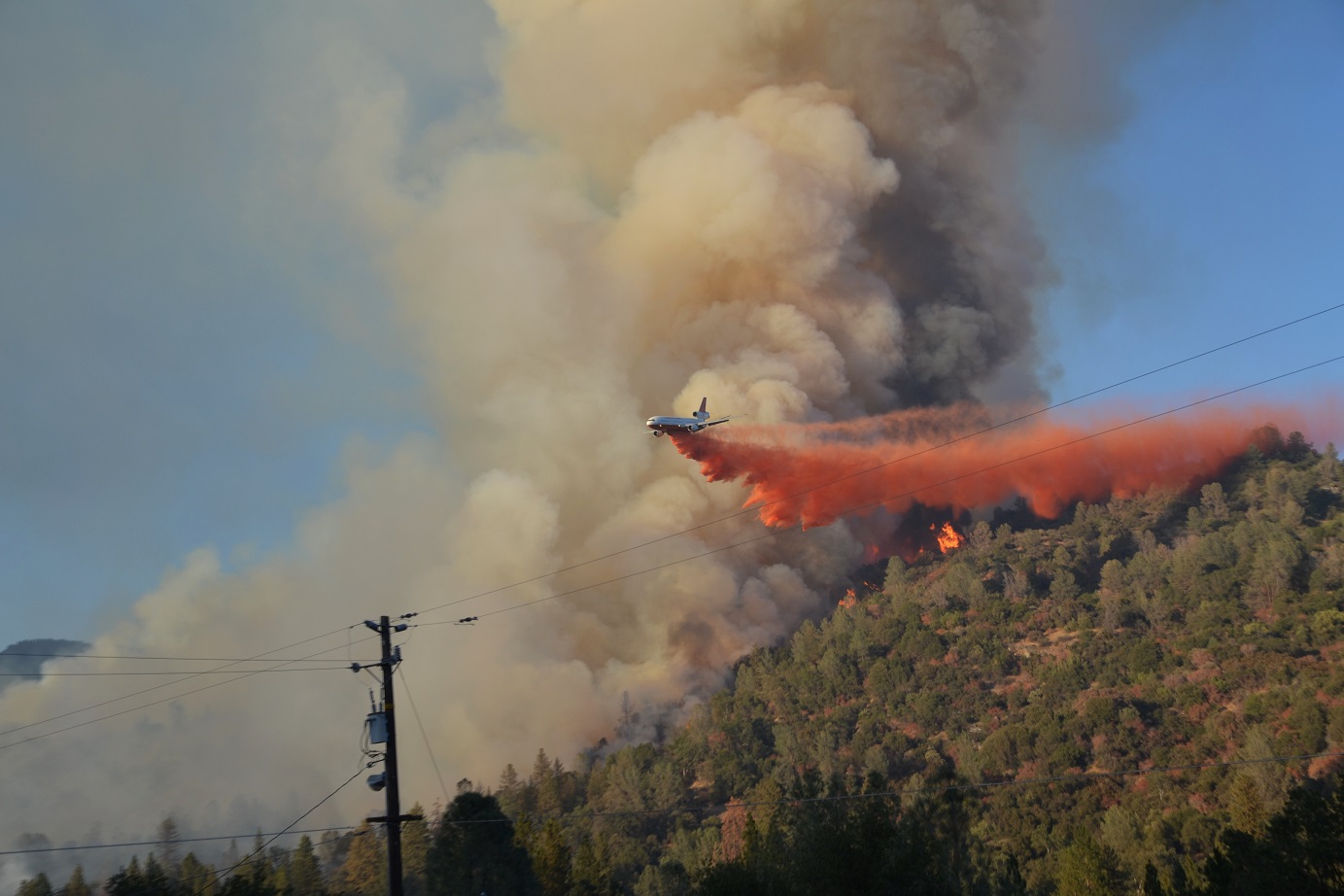 When the DC-10 banked across the face of Taylor Mountain and laid down a blanket of retardant on the leading edge of the fire just before sunset, it took the steam out of the advancing wall of flames, and gave the crews and the dozers the opening they needed to work through the night and get a major fireline across the ridge. Dozers were cutting 10-12 foot lines, and as the winds died down and the humidity rose, nobody on the fireline was slowing down.
When the DC-10 banked across the face of Taylor Mountain and laid down a blanket of retardant on the leading edge of the fire just before sunset, it took the steam out of the advancing wall of flames, and gave the crews and the dozers the opening they needed to work through the night and get a major fireline across the ridge. Dozers were cutting 10-12 foot lines, and as the winds died down and the humidity rose, nobody on the fireline was slowing down.
By sunrise on Tuesday, they had a line around 100% of the fire, and had stopped the forward progress. In less than 24 hours. They also had 650 people assigned to the incident – though it would grow to nearly 1,400 – and had set up a base camp at the Coarsegold rodeo grounds by 8 a.m.
Sierra Tel sent five technicians to the Bohna Arena where the new Incident Command Post was now a hive of activity, and within six hours, they had installed 10 DSL lines and 20 phone lines, connecting all the mobile offices on the site and getting everybody online.
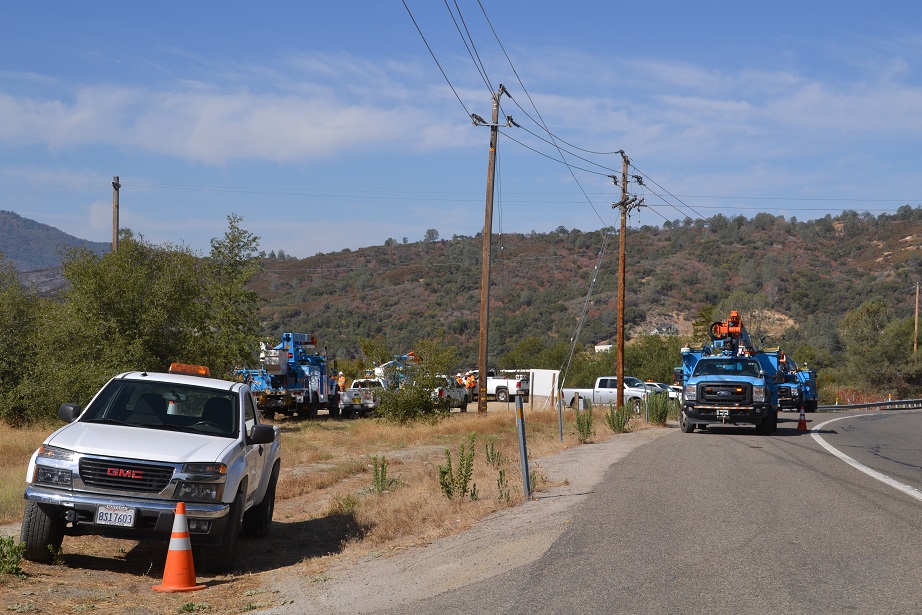 When Sierra Tel got in to the burn area to assess the damage on Tuesday afternoon, they found three pedestals burned out, and quickly got them repaired, so that no one returning to their homes experienced any phone or internet outages.
When Sierra Tel got in to the burn area to assess the damage on Tuesday afternoon, they found three pedestals burned out, and quickly got them repaired, so that no one returning to their homes experienced any phone or internet outages.
PG&E crews were also out in force on Tuesday, working as the fire still smoldered, to restore power to all affected customers within hours.
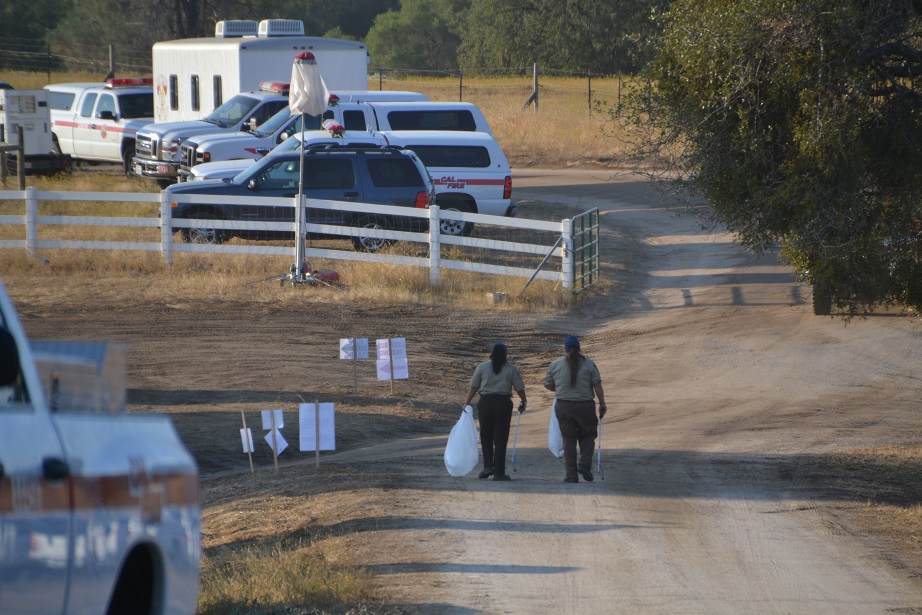 Inmate crews from the Mt. Bullion California Department of Corrections & Rehabilitation (CDCR) Conservation Camp did much of the tough work on the lines and during mop-up.
Inmate crews from the Mt. Bullion California Department of Corrections & Rehabilitation (CDCR) Conservation Camp did much of the tough work on the lines and during mop-up.
Young people from the California Conservation Corps performed a host of duties at the Incident Command Post, where hundreds of support personnel kept the troops in “beans, bolts and band-aids.”
It takes an army of support people to keep firefighters on the line, making sure they have the food, water, tools and rest they need to do their very demanding jobs.
There were over 60 departments including local and county agencies, fire districts and municipalities, the Park Service and the Forest Service, the Sheriff’s Office and the CHP, and dozens of others – all working together with one common goal – to protect life and property and allow residents to return to their lives as quickly as possible.
“When we tied in that last section of fireline, that was a good hour,” said Cheek. And though he knows there were successes on the Junction Fire, there were tragedies too.
“We lost five homes. That’s something I’ll always think about. I’m supposed to protect the community, and the day that doesn’t bother me is the day I’ll turn in my gear.”
Battalion Chief Chris Christopherson called the outcome of the Junction Fire a “huge feat, and a huge testament to the skill and ability of our firefighters.”
“We have gone through ‘thinking this fire out’ many times in our minds,” said Christopherson, who credited all the agencies involved for their major contributions to the effort.
Addressing a question about firefighter staffing levels from an audience member, Christopherson said, “We do rely heavily on PCFs in our agreement with the County. We always send the closest unit available, whether it’s Paid Call, volunteers, Cal Fire or the US Forest Service. With everyone working together, we can maintain staffing levels. Eastern Madera County has better fire protection than other areas of the county, and it’s because we all work together. There are plenty of Forest Service folks in the trenches working with us side by side.”
One very important thing residents can take away from the lessons of the Junction Fire may have been addressed in one of Christopherson’s final comments of the evening –
“Clear defensible space to give us a fighting chance.”
Editor’s note: The Junction fire was declared 100% contained on Monday, Aug. 25. Having fireline around 100% of the fire does not mean the fire is 100% contained. The percentage of containment is increased as the existing line is strengthened, mop-up is done on the inside of those lines, and the threat of the fire escaping with rising heat and winds has been eliminated.

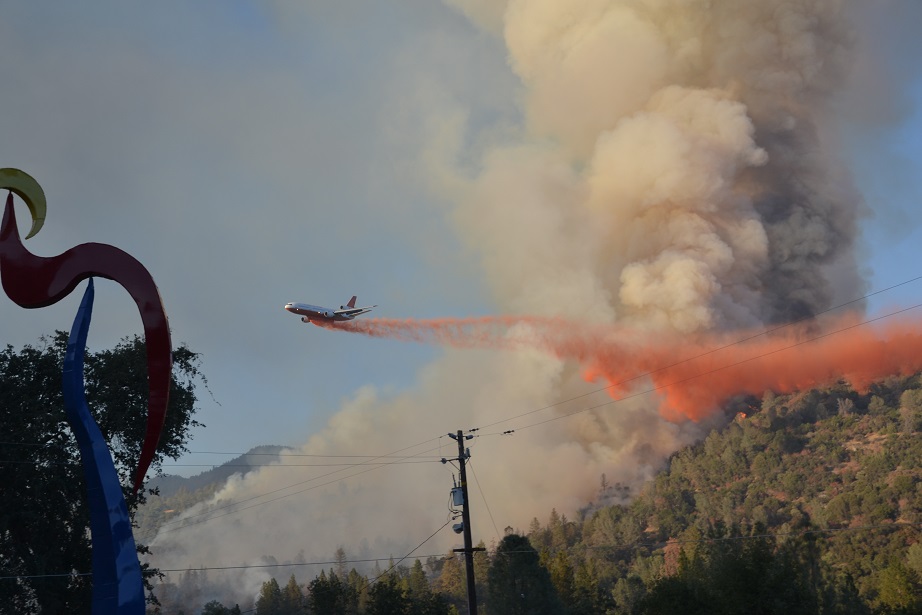

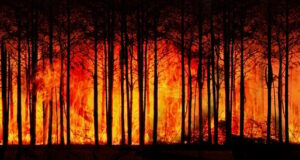
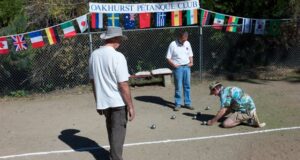
Great article, Gina, giving some behind the scenes insights into the most impactful Oakhurst story of the year.
Being part of Hillview Water, we were privileged to attend Incident Command meetings at the Bohna Arena and were impressed at the skills, expertise, coordination, and communication that is needed to fight a fire of this magnitude.
We owe a huge debt of gratitude to these brave firefighters who are, indeed, heroes!
The “Thank you Firefighters!” and “We love you, firefighters!” signs all around town are fitting statements but don’t begin to express the appreciation this community has for the heroes who saved our community.
It was a small part of this huge operation, but we just finished our calculations and are thankful that Hillview provided some 1.9 million gallons of water to help fight the fire.
Thanks to Chiefs Stein, Cheek, Christopherson and all our brave firefighters.
You are our heroes!